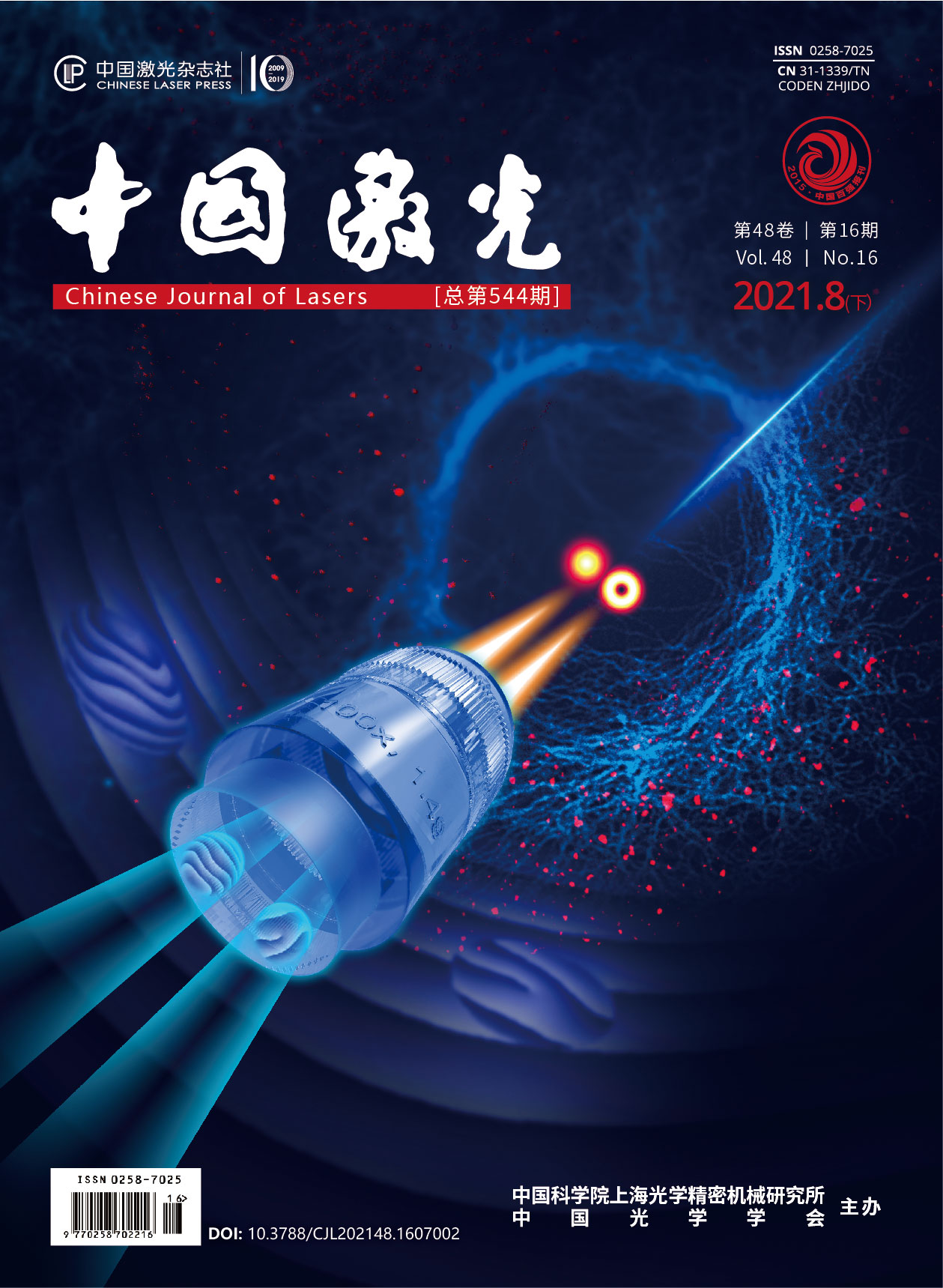面向大晶面超声换能器的虚拟平行投影光声模型重建方法  下载: 581次
下载: 581次
Objective In photoacoustic tomography, considering the size of ultrasonic transducers, especially for ones with large active surfaces, the traditional model-based (MB) method sums up the forward model matrix of each discrete point from the active surface to build this matrix. Although this traditional method has greater accuracy than the delay-and-sum method and back-projection method, with an increase in the number of discrete points from the active surface of transducer, the computing time and memory consumption will be more. Here, we present a new MB photoacoustic reconstruction algorithm based on the concept of virtual parallel projection. This model is suitable for photoacoustic tomography systems employing flat or cylindrical focused transducers with large active surfaces. This reconstruction algorithm directly establishes a virtual parallel-projection model matrix to replace the sum of the model matrices of the discrete points of the surface. The proposed method has an image performance similar to that of the traditional MB reconstruction method with discretized surface elements but considerably lower time consumption and storage requirements in the reconstruction process. We hope that this high-efficiency, high-accuracy method can provide a valuable reference and guidance for the research on MB photoacoustic reconstruction algorithms for use in real-time photoacoustic tomography.
Methods A photoacoustic reconstruction algorithm based on a virtual parallel-projection model is introduced to solve the problem caused by transducers with large active surfaces. When the distance between the image center and transducer satisfies the virtual parallel-projection condition (Eq. 6), the back-projection profile of each discrete point on the active surface in the reconstruction area can be approximated as a straight line parallel to the transducer (Fig.3). Then, a virtual parallel-projection model matrix can be directly built to replace the sum of the model matrices based on all discrete points on the surface. This step helps avoid the repeated matrix calculations of each discrete point and can reduce the time and memory requirements. The image performance of the proposed method was first demonstrated by numerical simulation using microspheres with a radius of 200 μm. We compared the photoacoustic images reconstructed by three methods, namely, the traditional model-based (MB) method, MB method with discrete surface elements (MB-SE), and proposed method based on virtual parallel-projection (MB-VP). The computing time and memory consumption of MB-SE and MB-VP methods were quantitatively calculated to show the high efficiency of the proposed method. Then, the phantom experiment was implemented using a self-built photoacoustic imaging system to verify the reconstructed accuracy of the MB-VP method (Fig.1). This agar phantom consisted of some polyethylene microspheres of diameter 200 μm. These microspheres were approximately embedded on the same plane in the phantom. Finally, to assess the feasibility of the MB-VP method for in vivo imaging, animal experiments were performed on the thoracic cavity region of a four-week-old KM mouse (~18.4 g).
Results and Discussions The reconstruction results of the proposed MB-VP method show high image quality and high reconstruction accuracy, comparable to those of the MB-SE method (Fig.4). However, the MB-SE method obtains desirable reconstruction results at the expense of computing time and memory consumption by increasing the number of discrete points on the active surface of the transducer (Table 2). When the active surface of the transducer is discretized into 15 points for the MB-SE method, the calculation time exceeds 10 min, which is approximately 20 times that of the proposed MB-VP method. In contrast, the MB-VP method provides higher quality and better spatial resolution in the reconstructed image with significantly lower reconstruction time and memory consumption (Fig.6). The phantom experiment results, which are consistent with the numerical simulation results, demonstrate that both MB-VP and MB-SE methods can effectively suppress image artifacts and obtain high-fidelity reconstructed images (Fig.7 and Table 3). The animal experiment results show that the result of the MB method suffers from artifacts and distortions, especially in the imaging of blood vessels at the position of the mouse epidermis far away from the image center; in contrast, the shapes of these blood vessels are accurately recovered by the MB-SE and MB-VP methods (Fig.8).
Conclusions In this work, a novel MB reconstruction algorithm based on the concept of virtual parallel-projection is developed to achieve high-efficiency MB reconstructions for photoacoustic tomography employing flat or cylindrical focused transducers with large active surfaces. By quickly and accurately building the forward model matrix based on the virtual parallel-projection condition, the proposed method can break the trade-off between reconstructed accuracy and computing consumption, which limits the applications of the traditional MB reconstruction methods. The results of numerical simulations, phantom experiments, and in vivo experiments demonstrate that the execution time and memory space required to reconstruct the initial pressure image are considerably reduced by the proposed method without sacrificing the quality of the reconstructed images. In other words, the MB-VP and MB-SE methods can obtain similar reconstructed images with higher quality and higher fidelity than the MB method, while the computational cost of the MB-VP method similar to that of the MB method, that is, it is much lower than that of the MB-SE method. The computational efficiency of the proposed method can be further improved through the parallel computation approach based on graphics processing unit acceleration to meet the requirements of real-time photoacoustic tomography.
李娇, 苗士超, 宋少泽, 路彤, 陈婷婷, 高峰. 面向大晶面超声换能器的虚拟平行投影光声模型重建方法[J]. 中国激光, 2021, 48(16): 1607001. Jiao Li, Shichao Miao, Shaoze Song, Tong Lu, Tingting Chen, Feng Gao. Reconstruction Algorithm Based on a Virtual Parallel-Projection Model for Photoacoustic Tomography Using an Ultrasonic Transducer with a Large Active Surface[J]. Chinese Journal of Lasers, 2021, 48(16): 1607001.







